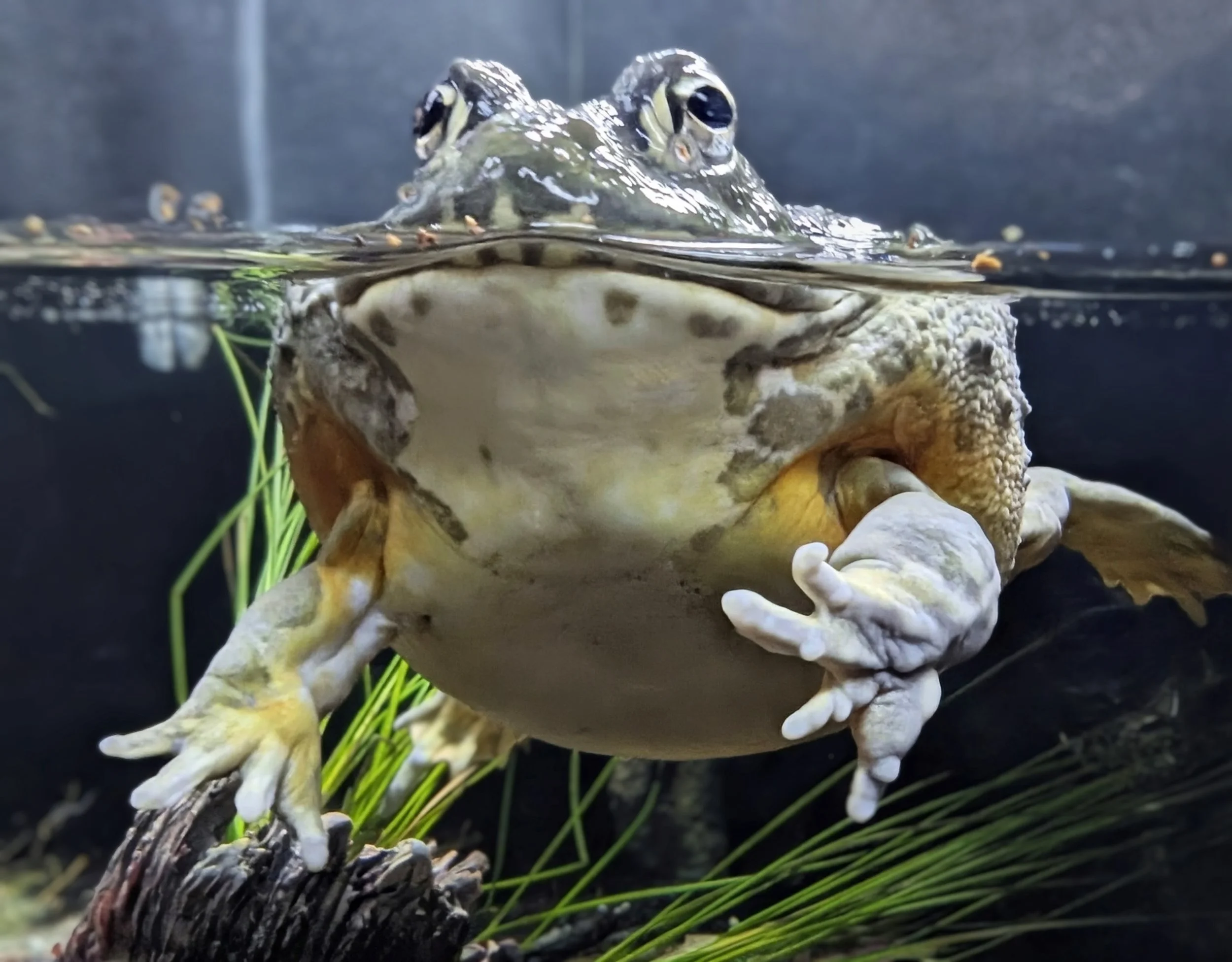Giant African Bullfrog
(scientific name Pyxicephalus adspersus), also often called the African bullfrog or pixie frog:
Basic Info & Taxonomy
Family: Pyxicephalidae.
Genus: Pyxicephalus — there are several related species (like P. edulis, P. angusticeps). P. adspersus is the one usually referred to as the “giant.”
Common names: Giant African Bullfrog, African Bullfrog, Pixie Frog.
Distribution & Habitat
Native to sub-Saharan Africa: in countries like South Africa, Namibia, Botswana, Mozambique, Tanzania, Zimbabwe, Zambia, Malawi, Angola, Uganda, etc.
Habitats include savannas (moist and dry), grasslands, marshes, temporary pools, also in farmland and areas with seasonal water.
They are burrowing frogs: for much of the year (especially dry seasons) they remain underground.
Physical Characteristics
Size & Weight:
Males can grow to about 10 inches (≈ 25.5 cm) in snout-to-vent length.
Weight: up to around 2 kg (≈ 4-5 lbs) for big males.
Females are much smaller — often roughly half the size of males.
Coloration & Other Morphology:
Adults generally olive-green or dull greenish.
Juveniles often more brightly colored, sometimes with yellow stripes or mottled patterns that fade with age.
Sexual dimorphism: males have yellow or orange throat/dewlap; females have cream or pale throats.
They have strong, muscular hind legs. They don’t have webbing (or much webbing) on their fingers; toes may have more.
Unique Features:
Behavior & Life Cycle
Feeding: Very opportunistic carnivores. They will eat almost anything small enough to fit in their mouths: insects, other frogs, small mammals, reptiles, birds. Even smaller bullfrogs including tadpoles.
Estivation / Dormancy:
In dry seasons, they become dormant. They burrow into soil and often form a cocoon of shed skin to reduce water loss.
They may remain inactive underground for many months — often 10 months or so, sometimes more depending on local climate.
Reproduction & Parental Care:
Breeding is triggered by rains. They emerge at the onset of the rainy season and breed in temporary shallow water bodies (pools, ditches, puddles).
Females lay large clutches: somewhere between ~3,000 to 4,000 eggs.
Eggs hatch quickly (≈ 1-2 days in many observations), and metamorphosis from tadpole to frog takes around 18-33 days, depending on environment.
Male African bullfrogs often guard the eggs/tadpoles. They may defend them aggressively.
If the pool starts drying out, males have even been observed digging channels to connect shrinking ponds to larger water sources to help their offspring survive.
Lifespan:
In the wild, animals often live ~20 years.
In captivity they may live longer (some reports of ~35-45 years).
Conservation & Threats
IUCN Red List status: Least Concern overall, but local populations may be impacted.
Threats include: habitat loss (due to agriculture, human settlement), climate change (altered rainfall patterns, extended dry seasons), the pet trade, and hunting (in some regions they are eaten).
Interesting / Notable Facts
They’re among the largest frogs in the world (though not the biggest). Only a few species, like the goliath frog (Conraua goliath), exceed them.
They are very voracious — if it moves and fits, they’ll try to eat it.
Cannibalism is common: adults may eat tadpoles (even their own), tadpoles may eat each other.
Their skin shedding is used to form a moisture-retaining cocoon during dormancy.





